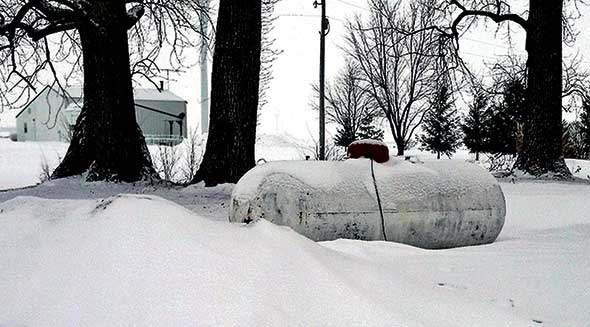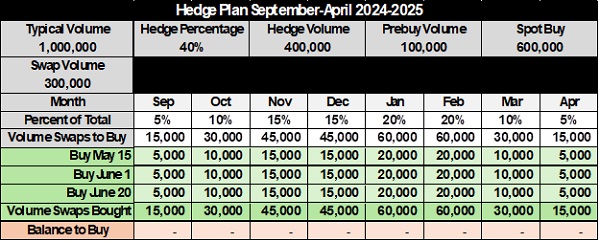Managing supply price risk ahead of next winter
Many propane retailers may find themselves in a bit of a quandary concerning managing the risk of higher propane prices this winter. On the one hand, there are reasons not to buy for next winter. U.S. propane inventory is at its highest level ever to begin an inventory-build period. Over the last three weeks, inventory builds have been above average. Those two things alone are reason enough to hesitate in buying for next winter.
On the other hand, U.S. export capacity has significantly increased. If pricing conditions favor it, between domestic demand and exports, propane inventory could be drawn down rather quickly.
Propane retailers can buy to meet immediate orders from customers or they can buy as speculators. If a propane retailer is filling orders to customers, worries about market direction are not necessary.
Let’s assume XYZ Propane wants to roll out a pre-buy to its customers to cover the core winter months of December, January and February. Currently, XYZ could buy a financial swap to lock in a price of 51 cents at Mont Belvieu, Texas, for those three months. Let’s assume XYZ buys from its physical propane supplier at Mont Belvieu, plus 15 cents. Further, it takes 5 cents to cover truck transport to its bulk plant. Right now, XYZ knows it can have propane valued at 71 cents in its tank for next winter. XYZ wishes to make a dollar margin on its pre-buy program. It is able to roll out a program at $1.71 per gallon.
Let’s say XYZ bought 150,000 gallons of swaps for this program and customers agreed to buy that many gallons at $1.71. At this point, a true hedge is in place where a known supply purchase has a corresponding sell. When we are true hedgers, market movement is irrelevant.
Our price risk management issues are complicated when we speculate. Anytime we commit to supply at a certain price and do not have a corresponding sell against it, we are speculating and market movement can adversely affect us. One of the best tools retailers can use to speculate is a call option.
A call option protects the buyer from higher prices but allows them to participate in a lower-priced market if prices fall. However, a call option has a premium that must be paid upfront for the option writer to accept the market risk.
Let’s say XYZ Propane currently likes the price of propane and believes it would work nicely in its marketplace next winter. However, it doesn’t want to be stuck with highly-priced propane if the bottom falls out of the market. All of these recent inventory builds have XYZ nervous about getting locked into a supply agreement with no immediate sell against it to lock in margin.
A call would have the same strike as the swap above, 51 cents. The premium to transfer the risk to falling prices is 11 cents for the same months and gallons.
XYZ would, in the worst case, have propane in its tank at 82 cents in December, January and February on 150,000 gallons. It owns a 51-cent call in Mont Belvieu. If Mont Belvieu’s monthly average is more than 51 cents, it will exercise the call and receive the difference between 51 cents and the monthly average. The payment from the call will offset the higher cost it will incur in putting propane in its bulk tank during December, January and February.
If prices fall and Mont Belvieu’s monthly average in each of the three winter months averages below 51 cents, XYZ will not exercise the call. However, it will be buying its physical propane at a lower price. XYZ will still need to add the cost of the option (11 cents) to whatever it is paying at the rack, but its total cost of propane would still be below 82 cents.
The call option allows XYZ Propane to establish a worst-case cost of supply, just like a pre-buy or swap would do. However, since it is not preselling, it gives XYZ the flexibility to keep a competitive street price next winter even if prices collapse. Swaps and pre-buys do not allow for that flexibility, which is why a retailer needs to be careful when using them for speculation positions.
The call puts XYZ in a very flexible situation, where the 11-cent premium represents its entire exposure to market movement regardless of which direction prices go. The key to the decision will be if XYZ is willing to pay the 11 cents upfront to transfer the risk. It will need to put a premium in its cost of supply as an expense. If XYZ’s market allows it to do so, XYZ will have a safe way to take a market position.
For more Cost Management Solutions analysis of the energy market that helps propane retailers manage their supply sources and make informed purchasing decisions, visit www.lpgasmagazine.com/propane-price-insider/archives/.

















